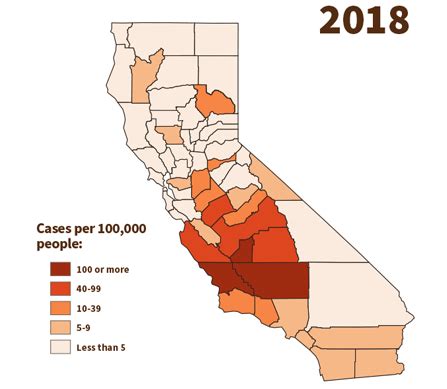Valley Fever, also known as Coccidioidomycosis, is a fungal infection that has been a significant health concern in California for decades. The disease is caused by the Coccidioides immitis fungus, which is commonly found in the soil of the San Joaquin Valley and other parts of the state. When the fungus is disturbed, it releases spores into the air, which can be inhaled by humans and animals, leading to infection.
History of Valley Fever in California
Valley Fever has been present in California for thousands of years, with evidence of the disease found in the remains of ancient Native Americans. However, it wasn’t until the 19th century that the disease became a significant health concern, particularly among miners and farmers who worked in the San Joaquin Valley. The disease was first identified in 1892 by a California physician, and since then, it has been the subject of extensive research and public health efforts.
Epidemiology of Valley Fever
Valley Fever is most commonly found in the southern and central regions of California, particularly in the San Joaquin Valley, the Central Coast, and the Mojave and Sonoran Deserts. The disease is typically more prevalent during the summer and fall months, when the weather is hot and dry, and the fungus is more likely to be disturbed. According to the California Department of Public Health, there were over 5,000 reported cases of Valley Fever in 2020, with the majority of cases occurring in Kern, Fresno, and Kings counties.
Symptoms and Diagnosis
The symptoms of Valley Fever can range from mild to severe and may include:
- Flu-like symptoms, such as fever, headache, and fatigue
- Coughing and chest pain
- Muscle and joint pain
- Rash or lesions on the skin
- Swollen lymph nodes
In severe cases, Valley Fever can lead to pneumonia, meningitis, and even death. Diagnosis is typically made through a combination of physical examination, medical history, and laboratory tests, such as blood cultures and imaging studies.
It's essential to seek medical attention immediately if you experience any symptoms of Valley Fever, particularly if you have a weakened immune system or are pregnant.
Treatment and Prevention
Treatment for Valley Fever typically involves antifungal medication, which can be prescribed for several months to a year or more, depending on the severity of the disease. In some cases, hospitalization may be necessary to treat complications, such as pneumonia or meningitis.
Prevention is key to reducing the risk of Valley Fever. This can be achieved by:
- Avoiding areas where the fungus is commonly found, such as construction sites and agricultural areas
- Wearing masks when working outdoors in endemic areas
- Avoiding activities that disturb the soil, such as digging or gardening
- Staying indoors during dust storms or other weather conditions that may stir up fungal spores
Steps to Reduce Your Risk of Valley Fever:
- Avoid areas with high levels of fungal spores
- Wear a mask when working outdoors in endemic areas
- Stay indoors during dust storms or other weather conditions that may stir up fungal spores
- Avoid activities that disturb the soil, such as digging or gardening
FAQ Section
What is the most common way to get Valley Fever?
+The most common way to get Valley Fever is by inhaling the fungal spores, which can be found in the soil of endemic areas.
Can Valley Fever be spread from person to person?
+No, Valley Fever cannot be spread from person to person. It is typically contracted through inhalation of fungal spores.
How long does it take to recover from Valley Fever?
+Recovery time from Valley Fever can vary depending on the severity of the disease, but it typically takes several months to a year or more to fully recover.
Future Trends and Research
Researchers are currently exploring new treatments and prevention methods for Valley Fever, including the development of a vaccine. Additionally, there is ongoing research into the genetic and environmental factors that contribute to the disease, which may lead to a better understanding of how to prevent and treat Valley Fever.
Valley Fever is a significant health concern in California, particularly in the San Joaquin Valley and other endemic areas. By understanding the symptoms, diagnosis, treatment, and prevention methods, individuals can take steps to reduce their risk of contracting the disease.
In conclusion, Valley Fever is a serious health concern in California, particularly in the San Joaquin Valley and other endemic areas. By understanding the symptoms, diagnosis, treatment, and prevention methods, individuals can take steps to reduce their risk of contracting the disease. Ongoing research and public health efforts are essential to controlling the spread of Valley Fever and improving treatment outcomes for those affected by the disease.



